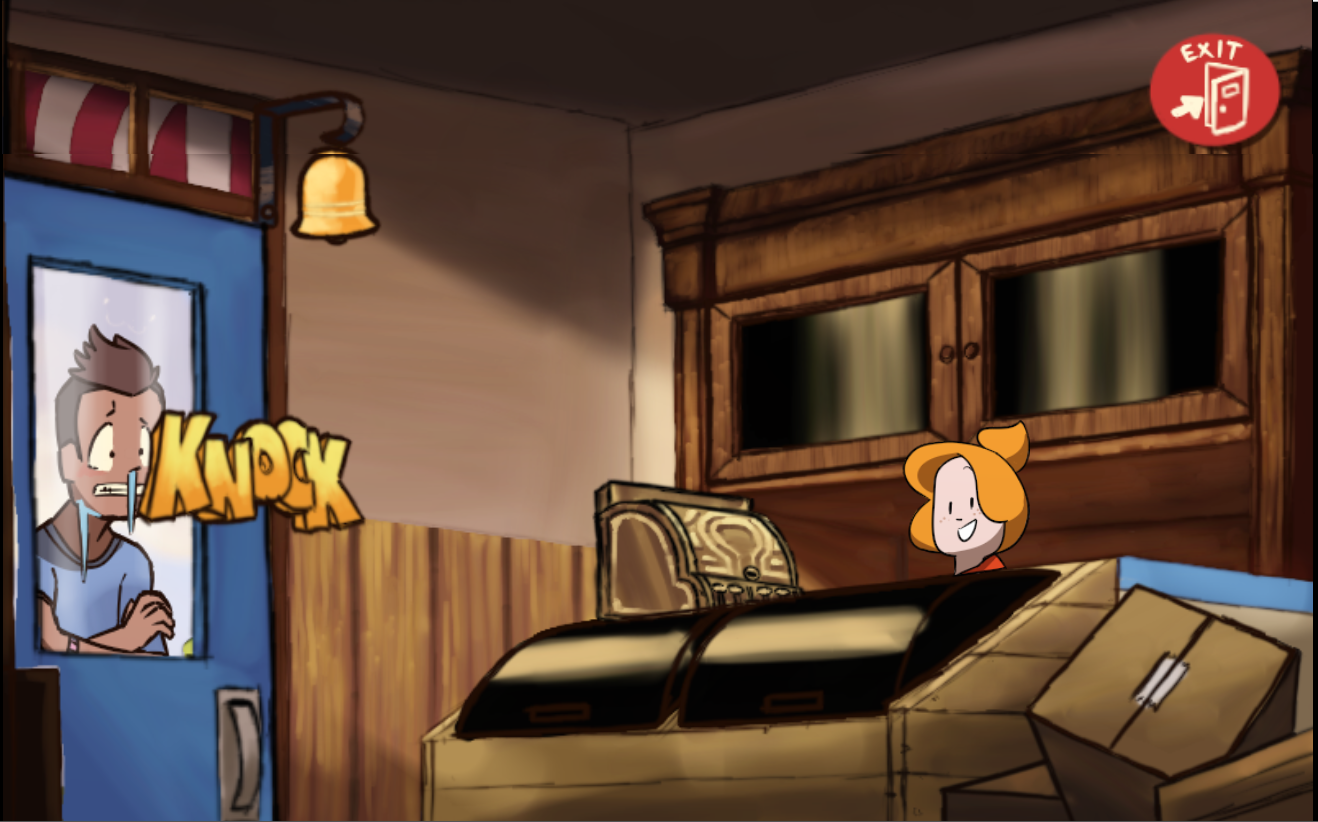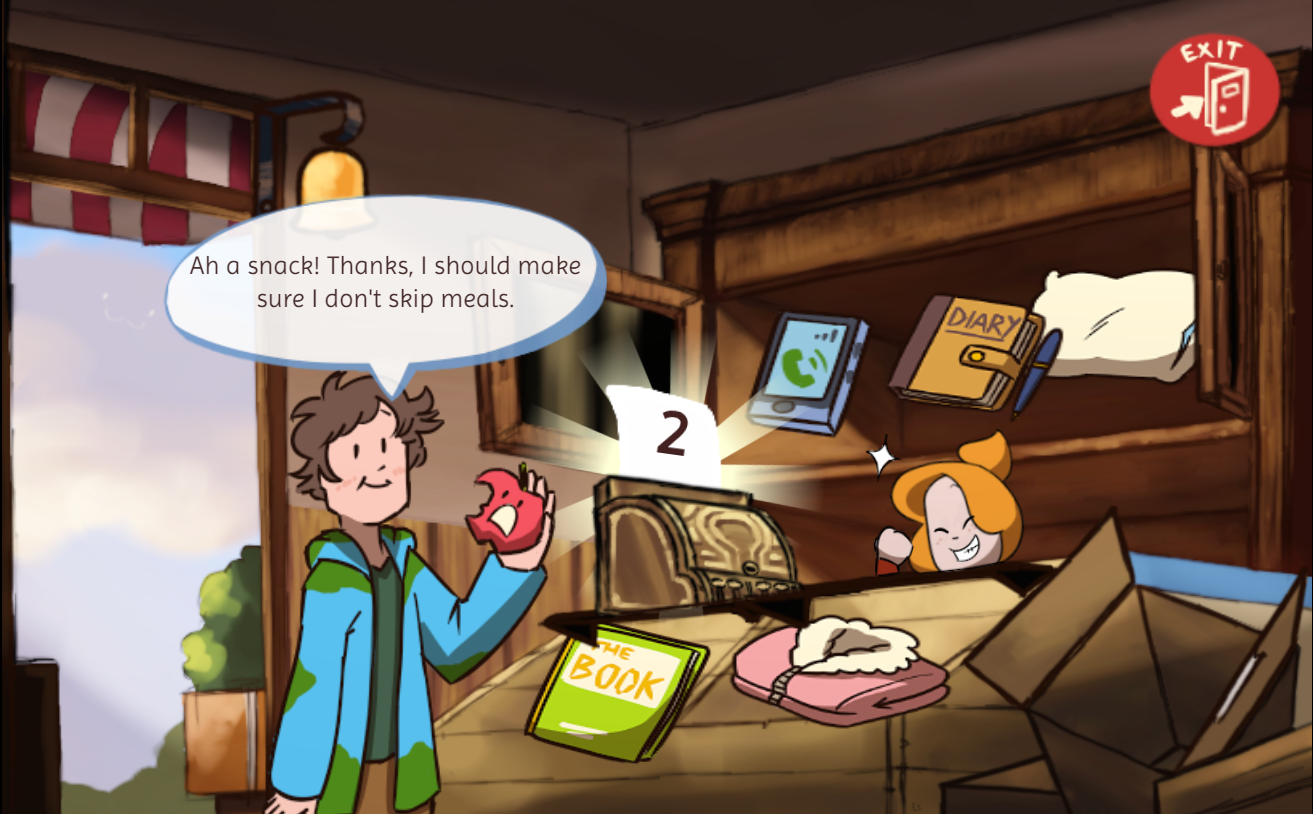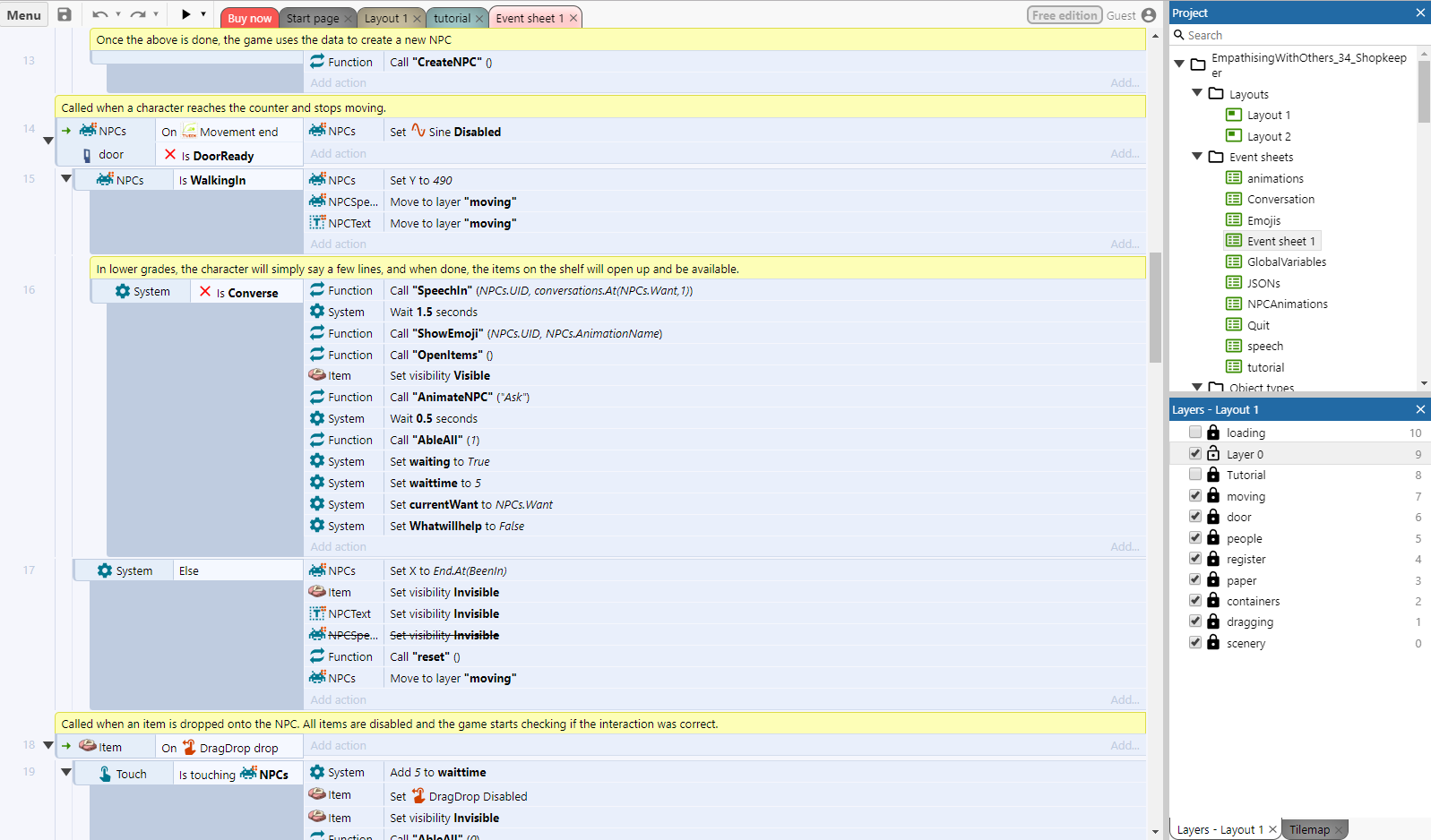The shopkeeper game is similar to the match and help games, but features more detailed, one on one conversations between characters in a singular, more fleshed out environment.
In this game, players work in a store and it is up to them to give customers items that match up with the problem they’re currently facing.
When the shop is empty, characters will walk up to the door and ring it. Players can let customers in by clicking on the door to open it.
When the customer reaches the counter, they will ask for an item and the cupboard doors will open. Items that are sitting on the shelf can be given to the character by clicking and dragging them.
The customer then reacts to the item and leaves, and the cycle repeats.
The scenario is made more interesting through the use of both audio and visual feedback.
When an item is given, the cash register shakes and pops out a sheet of paper with the player’s score, along with a flare effect. The customer and shopkeeper’s animations also change accordingly.
Shopkeeper games see completely different rulsets for each age group, as well as different problems and characters.
5/6 games are the most complex, with both characters offering randomised greetings, followed by a small conversation contextualising what the customer is about to ask for.
3/4 games use the base ruleset, with the customer only having one line of dialogue, which appears when they reach the counter.
K/2 games use no dialogue, instead relying on very distinguishable characters. A chef, for example, is the only person who would want a rolling pin. Emojis are also used, appearing in speech bubbles and replacing text. Finally, if the player does not make a choice after a short period of time, the words “What will help the ____?” will be spoken, with ___being replaced with a description of the character.


